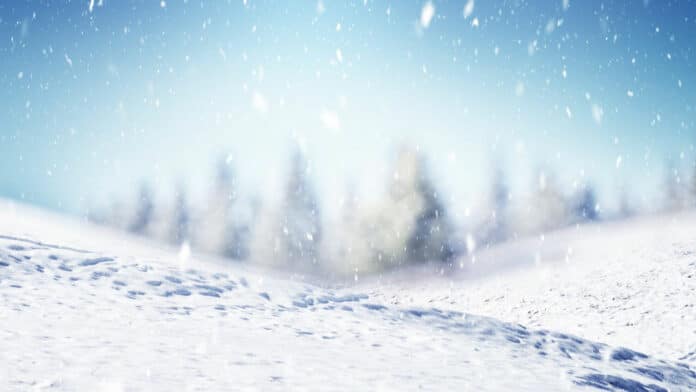It can be challenging to predict how much snow will fall during winter storms, mainly due to the similar appearance of regions of heavy snow and mixed precipitation on weather radar imagery.
To solve this issue, researchers at North Carolina State University created a new method of seamlessly integrating standard weather radar imagery and data about the type of precipitation. This method allows weather forecasters and atmospheric scientists to quickly and easily differentiate between heavy snow and mixed precipitation and enhances their understanding of the dynamics of winter storms.
The new method, known as “image muting,” makes areas of only snow or only rain more noticeable by reducing the visual prominence of mixed precipitation in moving radar images. It mainly relies on integrating two sources of information into one visual display: radar reflectivity and correlation coefficient.
Reflectivity indicates the intensity of precipitation detected by radar. Correlation coefficient values indicate the consistency of the shapes and sizes of precipitation particles within a storm.
Laura Tomkins, a doctoral candidate at NC State’s Center for Geospatial Analytics and lead author of the study, said, “For scientists who study snowfall from winter storms, image-muting helps ensure they are analyzing the right features.”
“Reflectivity and correlation coefficient values, though, are usually mapped as separate products. The way it works is that forecasters flip back and forth between reflectivity and correlation coefficient to see where the mixed precipitation is.”
“While repeatedly switching between maps is burdensome enough, keeping track of changing shapes of moving objects is particularly challenging.”
Scientists devised a way to identify regions of a winter storm with values typical of mixed precipitation to reduce the burden of mentally comparing reflectivity and correlation coefficient values as storms alter over time and geography. They then altered the appearance of these regions in conventional moving reflectivity maps, turning them into grayscale while the remainder of the map remained in a color scale that is accessible to color-blind people and displays the intensity of the precipitation.
Tomkins says, “We didn’t want to get rid of melting [from the map] altogether, just reduce its visual prominence. It gives us the confidence to say, we know this is not heavy snow because it’s contaminated with melting.”
“Weather forecasters are interested in how much snow will fall and when, but mixed precipitation is dangerous too.”
“Hence the importance of simply muting mixed precipitation with a gray scale rather than removing it from the map. The technique, developed specifically for analyzing snowfall during winter storms, will help atmospheric scientists better understand where snow bands occur and why, and [that research will] trickle down into improving snowfall forecasts. We designed this for our snow analysis, but it also has potential applications for weather forecasters.”
“For the average person checking weather maps to plan their day, image-muting would help them better understand where and when to expect transitions from rain and sleet to snow. It might be raining now, but will it transition to snow?” Notably, her method uses information about the precipitation particles measured by the radar, rather than observations of temperature, which are typically used to infer precipitation type in weather maps.”
“As a visualization technique, image-muting can be used in other research applications, such as reducing the visual prominence of data associated with high uncertainty. The technique is freely available for others to use.”
Journal Reference:
- Laura M. Tomkins et al. Image muting of mixed precipitation to improve identification of regions of heavy snow in radar data. Atmospheric Measurement Techniques. DOI: 10.5194/amt-15-5515-2022
